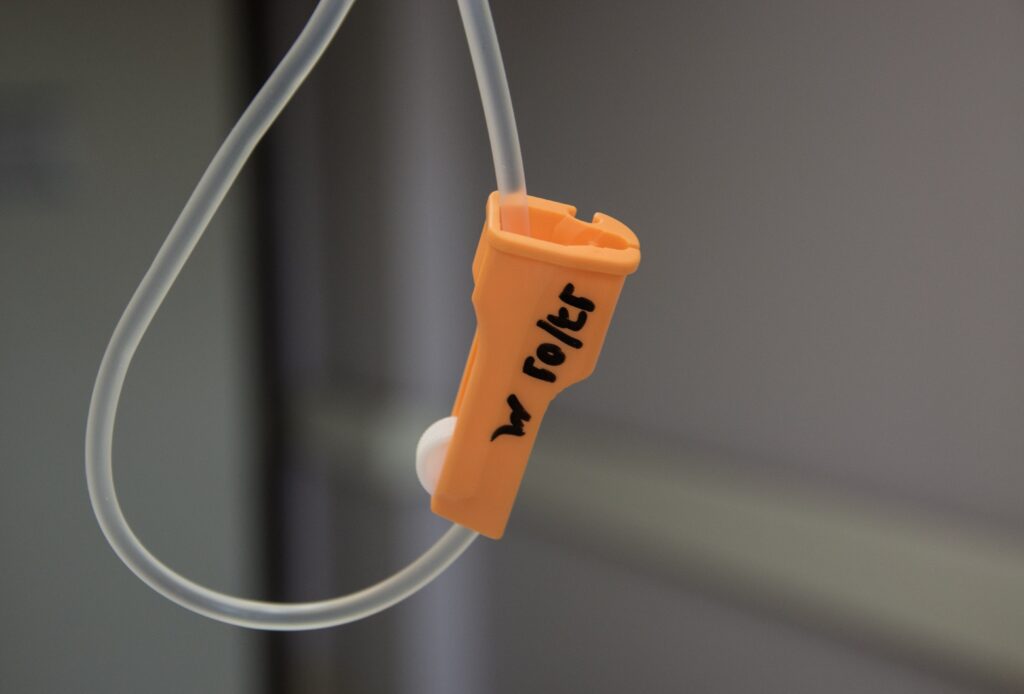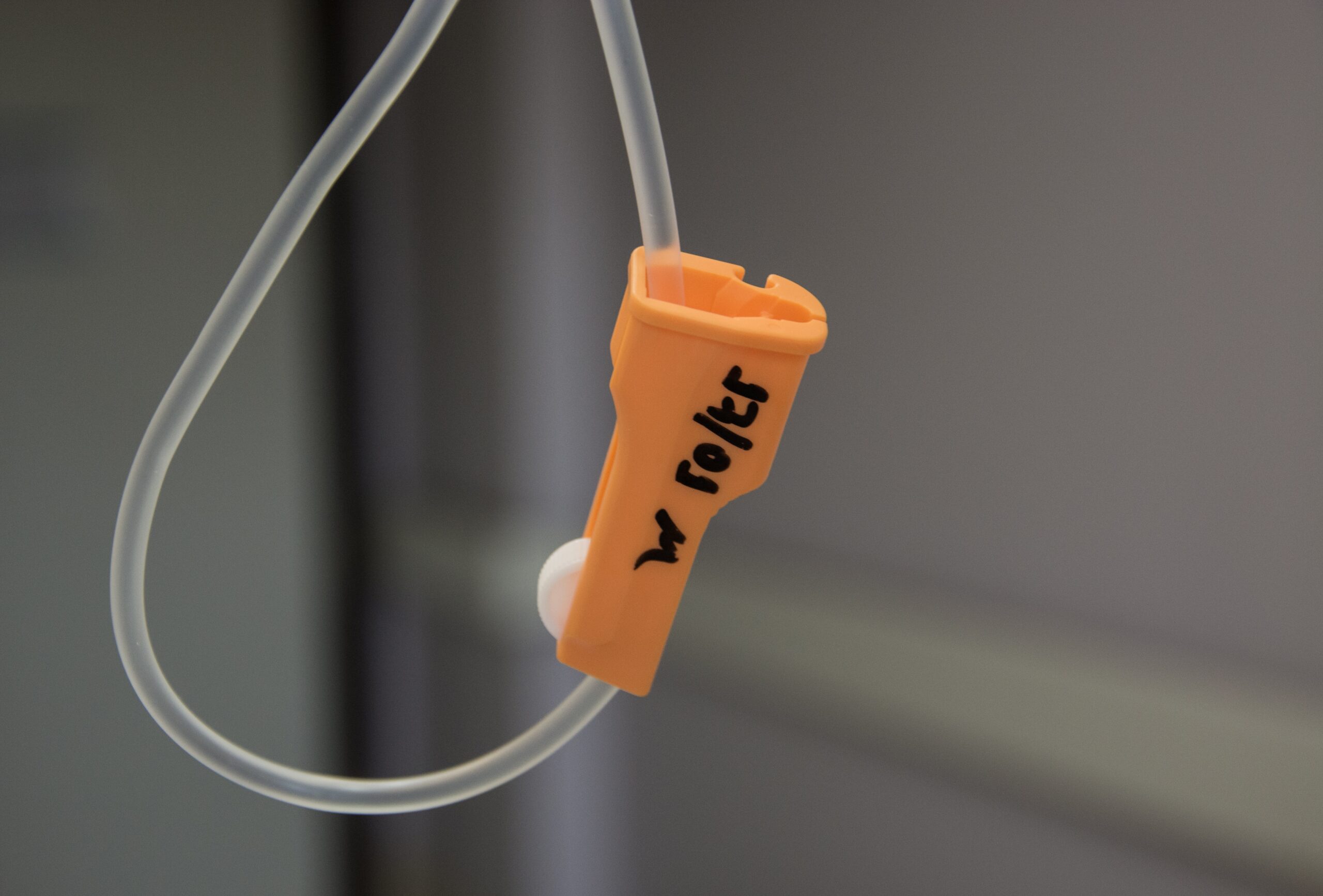Urinary leakage, also known as urinary incontinence, is a common condition that many individuals face in their daily lives. It occurs when an individual has involuntary loss of urine, leading to embarrassment and distress. This article explores the causes of urinary leakage, including both physical and lifestyle factors. It also discusses the triggers that can worsen this condition, such as coughing or sneezing. With a friendly approach, it provides insights into potential treatment options and preventative measures that individuals can take to manage and alleviate urinary leakage.

Understanding Urinary Leakage
Urinary leakage, also known as urinary incontinence, is a condition that affects many individuals, particularly women. It is the unintentional release of urine, which can occur during daily activities such as sneezing, laughing, or exercising. While urinary leakage can be embarrassing and have a significant impact on one’s quality of life, it’s essential to understand its causes, types, triggers, potential treatment options, and prevention methods.
Definition of Urinary Leakage
Urinary leakage refers to the involuntary release of urine. This condition can range from occasional leaks to a complete loss of bladder control. It is crucial to recognize that urinary leakage is not a normal part of aging or something that should be ignored. It is a medical condition that can be effectively managed with appropriate treatment.
Types of Urinary Leakage
Several different types of urinary leakage exist, each with its unique characteristics and underlying causes. It is important to identify the specific type of urinary leakage to determine the most suitable treatment options. The following are the most common types of urinary leakage:
Stress Urinary Incontinence
Stress urinary incontinence is the most prevalent type of urinary leakage and primarily affects women. It occurs when the bladder muscles and pelvic floor muscles are weakened or damaged, leading to urine leakage during activities that put pressure on the abdomen, such as coughing, sneezing, laughing, or exercising.
Urge Incontinence
Urge incontinence, also known as overactive bladder, is characterized by a sudden and overwhelming urge to urinate, followed by an involuntary loss of urine. It occurs when the bladder muscles contract involuntarily, not allowing enough time for an individual to reach the bathroom in time.
Overflow Incontinence
Overflow incontinence happens when the bladder does not empty completely during urination, leading to a continual or frequent dribbling of urine. It is often caused by an obstruction in the urinary tract or weak bladder muscles, making it difficult for the bladder to empty fully.
Mixed Incontinence
Mixed incontinence combines symptoms of both stress and urge incontinence. Individuals with mixed incontinence experience problems with bladder control in various situations, such as when pressure is applied on the abdomen or when experiencing a sudden urge to urinate.
Common Causes of Urinary Leakage
Understanding the causes of urinary leakage is crucial in determining appropriate treatment options. The following factors can contribute to the development of urinary leakage:
Weak Pelvic Floor Muscles
Weak pelvic floor muscles are often a significant cause of urinary leakage. These muscles support the bladder, urethra, and other pelvic organs and play a vital role in maintaining continence. Pregnancy, childbirth, and aging can weaken these muscles, leading to urinary leakage.
Hormonal Changes
Hormonal changes, such as those that occur during menopause, can contribute to the development of urinary leakage. The decline in estrogen levels can weaken the muscles around the bladder and urethra, resulting in decreased bladder control.
Urinary Tract Infections
Urinary tract infections (UTIs) can irritate the bladder and urethra, leading to a temporary increase in urinary leakage. Treating UTIs promptly can help alleviate symptoms and reduce episodes of leakage.
Obesity
Excess weight can put additional pressure on the bladder and pelvic floor muscles, leading to stress urinary incontinence. Maintaining a healthy weight can help reduce the frequency and severity of urinary leakage.
Chronic Coughing
Chronic coughing, often associated with conditions like asthma or chronic bronchitis, can significantly contribute to urinary leakage. The constant pressure on the abdomen during coughing episodes can strain the pelvic floor muscles and weaken bladder control.
Pregnancy and Childbirth
Pregnancy and childbirth can have a profound impact on the pelvic floor muscles, resulting in weakened bladder control. The increased weight of the uterus during pregnancy and the stretching and tearing of the muscles during childbirth can lead to urinary leakage.
Menopause
As mentioned earlier, the hormonal changes that occur during menopause can contribute to urinary leakage. The decline in estrogen levels can cause changes in the tissues around the bladder and urethra, increasing the risk of leakage.
Certain Medications
Certain medications, such as diuretics, alpha-blockers, sedatives, and antidepressants, can affect bladder control and lead to urinary leakage. It is essential to discuss any medication-related concerns with a healthcare professional to determine if alternative options are available.
Triggers of Urinary Leakage
Understanding the triggers of urinary leakage is crucial in managing and preventing episodes of involuntary urine release. The following are common triggers:
Coughing or Sneezing
Coughing or sneezing puts pressure on the abdomen, which can lead to urine leakage in individuals with weak bladder control or weakened pelvic floor muscles.
Laughing or Exercising
Similar to coughing and sneezing, laughing and exercising also exert pressure on the abdomen, potentially resulting in urinary leakage.
Lifting Heavy Objects
Lifting heavy objects can put strain on the pelvic floor muscles and weaken bladder control, leading to urinary leakage.
Drinking Alcohol or Caffeinated Beverages
Alcohol and caffeinated beverages can act as diuretics, increasing urine production and potentially triggering episodes of urinary leakage.
Urge to Urinate
Feeling a sudden and strong urge to urinate can lead to urgency incontinence, where individuals may experience an involuntary loss of urine before reaching the bathroom in time.
Sexual Intercourse
Sexual intercourse can put pressure on the abdomen and pelvic floor muscles, potentially leading to urinary leakage in individuals with weak bladder control.
Potential Treatment Options
Fortunately, there are various treatment options available to manage urinary leakage effectively. The choice of treatment will depend on the type and severity of the condition, as well as individual preferences. Common treatment options include:
Pelvic Floor Muscle Exercises (Kegel exercises)
Pelvic floor muscle exercises, also known as Kegel exercises, are a non-invasive and effective way to strengthen the pelvic floor muscles, thereby improving bladder control.
Pelvic Floor Physical Therapy
Pelvic floor physical therapy involves working with a specialized physical therapist who can develop a personalized treatment plan, incorporating exercises, manual therapy, and biofeedback techniques to improve bladder control.
Medications
Certain medications, such as anticholinergics or beta-3 adrenergic agonists, may be prescribed to help manage urinary leakage by altering bladder muscle contractions or reducing urgency.
Medical Devices
In some cases, medical devices such as pessaries or electrical stimulation devices may be recommended to help support the bladder or stimulate the nerves involved in bladder control.
Surgery
For more severe cases or when other treatment options have not been effective, surgical procedures such as bladder slings, urethral bulking agents, or artificial urinary sphincter implantation may be considered to improve bladder control.

Pelvic Floor Muscle Exercises (Kegel exercises)
Pelvic floor muscle exercises, often referred to as Kegel exercises, can help strengthen the pelvic floor muscles and improve bladder control. Here’s how to perform Kegel exercises:
How to Do Kegel Exercises
- Identify the pelvic floor muscles: To do this, imagine stopping the flow of urine midstream or contracting the muscles that prevent passing gas.
- Once you have located these muscles, empty your bladder and find a comfortable and quiet place to perform the exercises.
- Contract the pelvic floor muscles and hold for a count of three to five seconds.
- Relax the muscles for another three to five seconds.
- Repeat this process 10 to 15 times, aiming for three sets of exercises per day.
Benefits of Kegel Exercises
Regularly performing Kegel exercises can have several benefits, including:
- Strengthening the pelvic floor muscles, leading to improved bladder control
- Reducing or eliminating episodes of urinary leakage
- Enhancing sexual satisfaction
- Preventing or alleviating symptoms of pelvic organ prolapse
Frequency and Duration of Kegel Exercises
To achieve noticeable results, it is recommended to perform Kegel exercises at least three times a day, every day. Consistency is key, and it may take several weeks or months of practice to see improvements in bladder control. Once the pelvic floor muscles have become stronger, it is essential to continue the exercises as part of a regular maintenance routine.
Tips for Successful Kegel Exercises
To maximize the effectiveness of Kegel exercises, consider the following tips:
- Take your time and focus on contracting the correct muscles. Avoid tensing your abdomen, buttocks, or thigh muscles.
- Breathe normally and do not hold your breath while performing the exercises.
- Start with shorter contraction and relaxation times, gradually increasing them as the muscles become stronger.
- Be patient and consistent. It may take time for the muscles to strengthen and for improvements in bladder control to become noticeable.
Pelvic Floor Physical Therapy
Pelvic floor physical therapy is a specialized form of therapy that aims to improve bladder control by addressing the underlying causes of urinary leakage. Here’s what to expect from pelvic floor physical therapy:
What to Expect from Pelvic Floor Physical Therapy
During a pelvic floor physical therapy session, a trained therapist will evaluate your condition, including assessing the strength and coordination of your pelvic floor muscles. They will develop a personalized treatment plan tailored to your specific needs, which may include a combination of exercises, manual therapy techniques, and biofeedback.
Techniques Used in Pelvic Floor Physical Therapy
Pelvic floor physical therapy may involve various techniques, including:
- Strengthening exercises: Similar to Kegel exercises, these exercises focus on exercising and strengthening the pelvic floor muscles.
- Stretching exercises: These exercises aim to improve the flexibility and range of motion of the pelvic floor muscles.
- Manual therapy: This technique involves the therapist using their hands to apply gentle pressure or stretching to specific areas of the pelvic floor muscles.
- Biofeedback: Biofeedback involves the use of electronic devices or sensors to provide visual or auditory feedback on the strength and coordination of the pelvic floor muscles during exercises.
Benefits of Pelvic Floor Physical Therapy
Pelvic floor physical therapy offers several benefits for individuals with urinary leakage, including:
- Improved muscle strength and coordination
- Enhanced bladder control
- Reduced frequency and severity of urinary leakage episodes
- Increased awareness and understanding of the pelvic floor muscles
- Improvements in associated symptoms, such as pelvic pain or discomfort
Duration and Frequency of Pelvic Floor Physical Therapy
The duration and frequency of pelvic floor physical therapy will vary based on individual needs and the severity of the condition. Typically, therapy sessions are scheduled once or twice a week, and the duration of treatment can range from a few weeks to several months. Consistency and adherence to the recommended treatment plan are vital for achieving optimal results.
Medications for Urinary Leakage
In some cases, medications may be prescribed to help manage urinary leakage. Here’s what you need to know about medications for urinary leakage:
Types of Medications
There are different types of medications that may be used to treat urinary leakage, depending on the specific type and underlying causes of the condition. Common types of medications include:
- Anticholinergics: These medications work by blocking the chemical signals that cause the bladder muscles to contract involuntarily, helping reduce urgency and frequency of urination.
- Beta-3 adrenergic agonists: These medications stimulate specific receptors in the bladder, relaxing the smooth muscles and increasing bladder capacity.
How Medications Work
Medications for urinary leakage work in different ways to manage the symptoms. Anticholinergics block the action of acetylcholine, a neurotransmitter that plays a role in involuntary bladder muscle contractions. Beta-3 adrenergic agonists directly target receptors in the bladder, promoting relaxation of the bladder muscles.
Effectiveness and Side Effects
The effectiveness of medications for urinary leakage can vary depending on the individual and the specific medication used. While medications can provide relief for some individuals, they may not be suitable or effective for everyone. It is essential to discuss potential side effects and the expected benefits with a healthcare professional before starting any medication.
Consultation with a Healthcare Professional
To determine if medications are a suitable treatment option, it is important to consult with a healthcare professional. They can evaluate your specific condition, medical history, and potential underlying causes of urinary leakage to determine the most appropriate medication and dosage.
Medical Devices for Urinary Leakage
In certain cases, medical devices may be recommended to manage urinary leakage. Here’s what you need to know about medical devices for urinary leakage:
Types of Medical Devices
There are several types of medical devices that can be used to support the bladder or stimulate nerves involved in bladder control. Common medical devices for urinary leakage include:
- Pessaries: These are specially designed devices that are inserted into the vagina to provide support to the bladder and urethra, helping reduce urinary leakage.
- Electrical stimulation devices: These devices use mild electrical currents to stimulate the nerves involved in bladder control, helping strengthen the pelvic floor muscles and improve bladder control.
How Medical Devices Work
Medical devices work by providing support or stimulation to the bladder or pelvic floor muscles, aiming to improve bladder control and reduce urinary leakage. Pessaries help support the bladder and urethra, reducing the pressure on these structures that can lead to leakage. Electrical stimulation devices use gentle electrical currents to stimulate the nerves and muscles involved in bladder control, promoting strengthening and coordination.
Effectiveness and Usage
The effectiveness of medical devices can vary depending on the individual and the specific device used. Pessaries have been found to be effective in reducing urinary leakage in certain individuals, while electrical stimulation devices have shown promising results in strengthening pelvic floor muscles and improving bladder control. It is important to consult with a healthcare professional to determine the most suitable device and receive proper instruction on its usage.
Consultation with a Healthcare Professional
Before considering the use of any medical devices for urinary leakage, it is important to consult with a healthcare professional. They can evaluate your specific condition, medical history, and potential benefits and risks of using the device. A healthcare professional can guide you in choosing the most appropriate device and provide instructions on its proper usage.
Prevention Options for Urinary Leakage
While it may not always be possible to prevent urinary leakage entirely, several lifestyle modifications can help reduce the risk and severity of episodes. Consider the following prevention options:
Maintaining a Healthy Weight
Maintaining a healthy weight is essential in reducing the pressure on the bladder and pelvic floor muscles, helping to prevent stress urinary incontinence.
Regularly Exercising the Pelvic Floor Muscles
Engaging in regular pelvic floor muscle exercises, such as Kegel exercises, can help strengthen the muscles involved in bladder control and reduce the risk of urinary leakage.
Avoiding Excessive Alcohol and Caffeine Consumption
Alcohol and caffeinated beverages can act as diuretics, increasing urinary production and potentially triggering episodes of urinary leakage. Limiting consumption or avoiding them altogether can help reduce the frequency of leakage.
Quitting Smoking
Smoking is associated with chronic coughing, which can contribute to weakened bladder control and urinary leakage. Quitting smoking can improve overall lung health and reduce the risk of chronic coughing.
Managing Chronic Coughing
If you have a chronic cough, it is important to work with a healthcare professional to identify and treat the underlying cause. Managing chronic coughing can help reduce its impact on bladder control and prevent urinary leakage.
Treating Urinary Tract Infections Promptly
Prompt treatment of urinary tract infections is crucial in managing urinary leakage. UTIs can irritate the bladder and urethra, exacerbating symptoms of leakage. Seeking timely medical attention and completing prescribed treatment can help alleviate symptoms and prevent further complications.
Practicing Good Bathroom Habits
Establishing regular bathroom habits, such as emptying the bladder at appropriate intervals and fully emptying the bladder during urination, can help prevent overflow incontinence and reduce the risk of urinary leakage.
Staying Hydrated
Maintaining adequate hydration is essential for overall health, including bladder function. However, avoiding excessive fluid intake before bedtime can help reduce the frequency of nighttime urination and potential leakage.
Avoiding Constipation
Constipation can place additional strain on the pelvic floor muscles, potentially weakening bladder control. Maintaining a healthy diet, rich in fiber, and staying properly hydrated can help prevent constipation and reduce the risk of urinary leakage.
Discussing Medication Side Effects with a Healthcare Professional
If you are taking any medications and experience urinary leakage as a side effect, it is crucial to discuss this with a healthcare professional. They can evaluate your medication regimen and potentially explore alternative options with fewer urinary side effects.
In conclusion, understanding urinary leakage is crucial in effectively managing and treating this common condition. By recognizing the types, causes, triggers, potential treatment options, and prevention methods, individuals can take proactive steps towards improving bladder control and overall quality of life.
or more understanding about embarrassing health conditions, check out this article on genital lesions.

